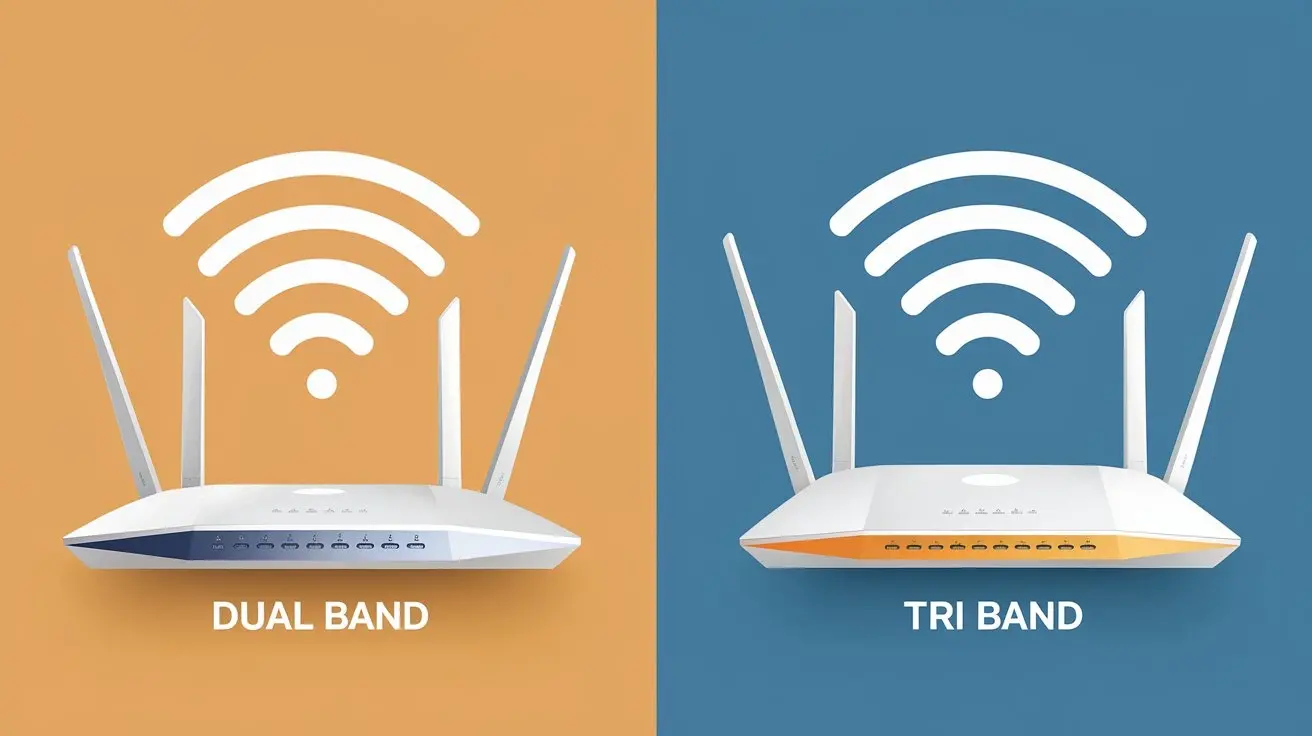-
Posted on: 27 Nov 2024

-
In the present era where everything is virtually done via the computers or laptop, a strong and stable connection for home or office is fundamental. One the key aspects of being able to achieve this is by having a good quality router. That is why it becomes difficult to identify which model and type of router technology would be most suitable in your case. In this blog, let’s clear up confusion between dual band and tri-band routers and discuss which one could work best for you.
1. Dual Band Routers
A dual band router is probably the most common kind of wireless routers available in the market today. These networks work on two different wireless frequency standards, although, open frequency standards are 2.4 GHz and 5GHz. The 2.4 GHz band is slightly less advanced than the second, but it is even older than Wi-Fi itself. This band provides more coverage and better signal transmission through the walls but is far more recovered from molecules from other devices such as cordless phones and microwave ovens.
While the 2.4 GHz band may provide longer range due to its capability of penetrating through walls, it has a slower data transfer rate and may experience inference at the same time the 5 GHz provides a faster data transfer rate and can barely penetrate through walls, so that it has a short range. The main advantage of dual band routers is the ability to choose from which band to use, depending on the requirements – higher speed or more coverage area.
2. Tri-Band Routers
Tri-band routers are the next generation Wi-Fi systems which provide routers with three different frequencies to work with. It also has three radio bands: 2.4 GHz, 5 GHz, and an additional 5GHz band that tri-band routers offer. This third band minimises traffic jam by dividing the traffic across the three bands rather than two which also leads to more efficient and consistent connections for several devices.
Tri-band routers have the ability to allow each frequency band provide certain type of traffic on the network. For example, the first one is designed for data-intensive applications, such as online gaming or video streaming, the second one is for slightly slower applications, including web surfing or email checking, while the third one is aimed at the devices that do not support 5 GHz frequency.
3. Choosing the Right Router
With this we are in a position to compare and contrast dual band and tri-band routers and as a result weighs on which type of router will be best to use. Here are some factors to keep in mind:
- Number of connected devices: If you have several connected devices, then, perhaps, tri-band router will be more helpful, for they can realize the connection through three bands.
- Type of usage: If you have mostly outdated gadgets that are compatible with the 2.4 GHz frequency, or perform activities that require large bandwidth, such as gaming and streaming, probably a tri-band router will boost your experience.
- Budget: The significant difference is that tri-band routers are relatively more expensive than the dual-band ones. However, if budget is one of the major factors, a Dual Band router may actually be the more logical one.
- Future-proofing: When a person expects to have more devices connected, or when they want to implement more bandwidth demanding applications down the line, tri-band routers will prove useful.
All in all, when choosing the proper router to buy, both the dual band and the tri-band routers have their own strengths and weaknesses which makes the decision making process depend on the buyer’s personal preferences, as well as what he or she deems necessary. Most users should fare well with a dual band router, though power users with many connected devices or those requiring higher speeds will do well with a tri-band router. It is therefore important that one keep abreast with the advancements in wireless networking technology in order to make the rite decision for the home or office.





